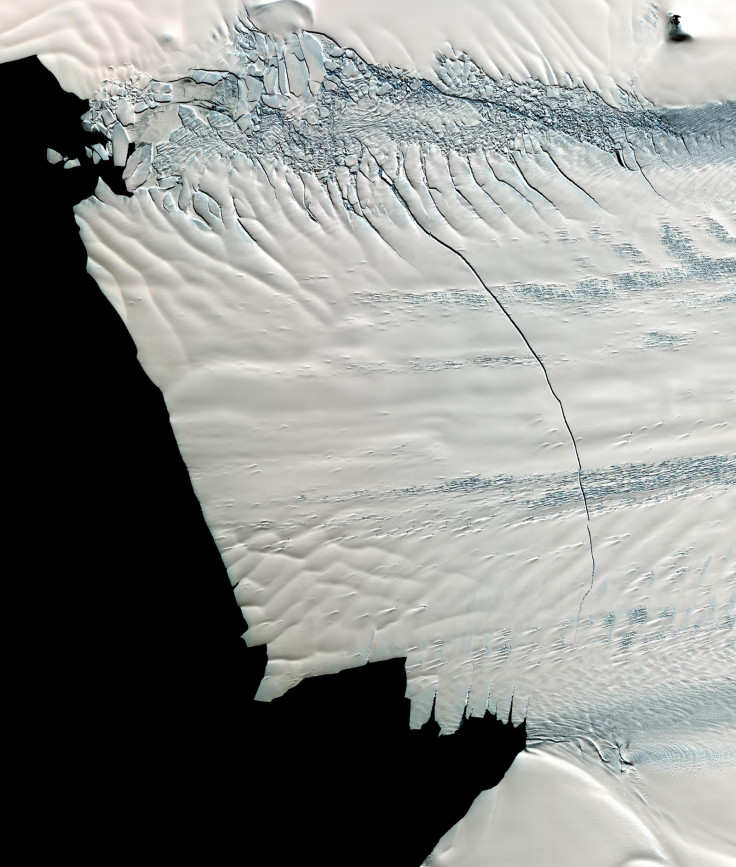When Ice Ages will end can now be predicted with a simple rule
The length of Ice Ages went through a shift in the last few million years, but a simple rule predicts when they will end.
Average sunshine in the northern hemisphere and the time since the last break between ice ages is all that's needed to predict when the next warm period will be.
The finding, published in the journal Nature, reconciles a long-standing puzzle between the frequent warm periods, or interglacials, that happened before 1 million years ago, and the less frequent interglacials more recently. Between 2.6 and 1 million years ago, interglacials happened about every 41,000 years.
Then something happened to change the rate at which the warmer periods came. After 1 million years ago, interglacials happened roughly every 100,000 years. What changed was the threshold of sunshine needed to melt the ice sheets across the northern hemisphere, the study finds.
Originally, this threshold could be reached when the tilt of the Earth on its axis tipped the northern hemisphere towards the sun when the Earth was at its closest point to the sun in its elliptical orbit. The maximum radiation would happen once every 41,000 years.
"Then something happens, and we think it happens gradually. Between 1.5 and 1 million years ago there is a change in the threshold," study author Chronis Tzedakis of University College London told IBTimes UK. "It becomes higher – so the amount of energy needed to melt ice increases. We're not sure why that is."
This raised threshold meant that when the Earth came to a peak in solar radiation every 41,000 years, it was no longer enough. The ice sheets would continue growing as the ice ages deepened, spreading further across the continents.

Saving the Earth from a permanent Ice Age
In this new, generally colder world, a lot more sunshine would be needed than the maximum the Earth received every 41,000 years. So what would stop the Earth descending into a permanent ice age in this new climate?
Tzedakis thinks that the answer is in the sheer size of the ice sheets in this colder world.
"As the ice sheet grows more and more, it also becomes more unstable," said Tzedakis.
As an ice sheet grows larger in a long ice age, the base may be extending to more southerly locations as it grows. It may get dirtier from dust, and dark ice melts more easily than white ice, or there may be more carbon dioxide seeping from the ocean with time, Tzedakis said.

"We're not sure what the mechanism is, but what we've found is that, there's a linear relationship between time and how unstable the ice sheet becomes. The ice has become unstable. And eventually you deglaciate. So you cannot have a glaciation that goes on and on and on, at some point it will have to melt."
The instability of the enormous ice sheets brought down the threshold solar energy needed to melt them. Eventually, this threshold would fall down to the same level as it was during the period before 1 million years ago, when interglacials happened every 41,000 years. When the tilt of the Earth and its position in the elliptical orbit led to peak solar radiation, this would then be enough to make the ice sheets retreat and leave most of the Earth's continents ice-free.
Understanding the million-year-old transformation
The research raises a big question. Exactly what happened to the Earth's climate 1 million years ago that raised the threshold for deglaciation?
Research efforts to answer the first question are already underway, with researchers studying ancient sediments to see whether the oceans hold evidence of the Earth's carbon dioxide levels during that period. An expedition to Antarctica to drill down to the world's oldest ice could also answer that question, as bubbles trapped in the ice hold 'fossil air', and are living relics of the Earth's atmosphere up to 1.5 million years ago.

Although the cause for the change is yet to be found, the simplicity of the rule of interglacials is surprising in climate science, which is usually seen as extremely complex and nuanced. However, climate scientists say that the findings are convincing.
"This is a strong indication that ice ages are indeed predictable, and that the underlying mechanisms behind the 100,000-year climate cycle are probably quite simple," writes Didier Paillard, a climate scientist at the Centre d'Etudes de Saclay, France, in a comment article in Nature.
© Copyright IBTimes 2025. All rights reserved.






















